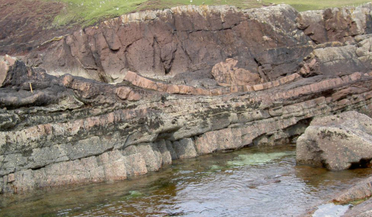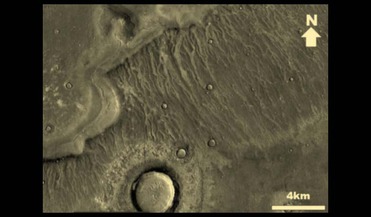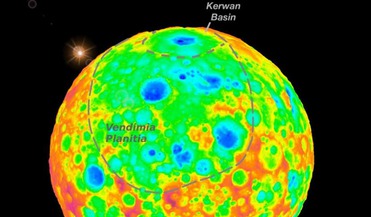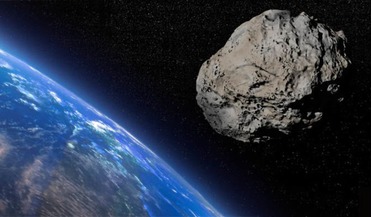 22 January 2020
2.2 billion year old impact crater is confirmed as Earth's oldest
22 January 2020
2.2 billion year old impact crater is confirmed as Earth's oldest
... would have been the familiar central section of the crater which lifts up after impact. “The landscape is barren, but not empty. ... say for sure, but the effects of impact cratering have long been recognised as drivers of climate change over Earth...
 10 June 2019
One-kilometre-wide meteorite impact in UK found
10 June 2019
One-kilometre-wide meteorite impact in UK found
... strike was to blame. Amor and team then set about finding the location of the recently identified impact crater and coupled with other geological features such as field observations of nearby bedrock and the alignment of magnetic...
 20 May 2016
Evidence for massive Tsunamis found on Mars
20 May 2016
Evidence for massive Tsunamis found on Mars
... a typical onshore height of around 50 m and local variations from ~10 m to as much as ~120 m. The team estimate that impact craters with a diameter of ~30 km formed at a rate of one every 2.7 million years during the Late Hesperian over the entire...
 27 July 2016
Where did Ceres' craters go?
27 July 2016
Where did Ceres' craters go?
... – shallow basins as much as 800 km (500 miles) wide hidden beneath a surface subsequently marked with small craters. Could these be 'relict' impact basins, left over from large collisions that took place early in Ceres' history? "It is as though...
 April 2018
Developing Mars
April 2018
Developing Mars
... the LMT proposes using laser-deflection technology to redirect a small celestial body to a 2036 Mars impact. The plan to create an impact crater, called ‘Omaha Crater’, with lake, immense facilities and even summer plant life is innovative and not...
 18 January 2019
Asteroid impacts on the increase since the age of the dinosaurs
18 January 2019
Asteroid impacts on the increase since the age of the dinosaurs
... million years, their deep roots below the surface however are largely intact; indicating that large impact craters formed over the same period and in the same terrains should also be preserved. Dr Thomas Gernon, Associate...